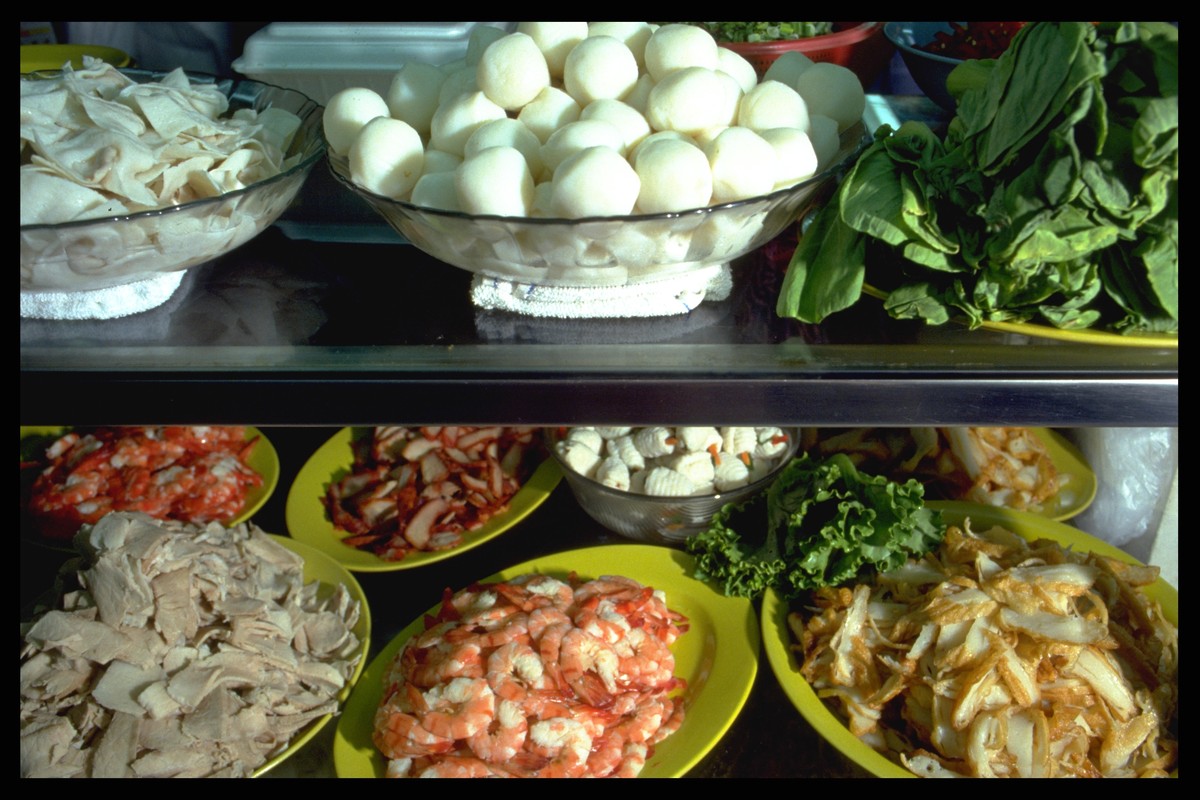Singapore’s Chinese-language films in the multilingual film era (1991 to present)
In Singapore, “Chinese-language films” or “Chinese films” are generally films in which Mandarin and Chinese dialects are the primary language. Due to the tendency for local films during the post-1990 period to feature a mix of several languages, parts spoken in English or Malay are also common in Chinese films.
Restarting the local film industry with multilingual films
In the 1990s, the Economic Development Board’s push to promote creative industries, including film, was an opportunity for local feature film production to get started again.1 Between 1991 and 1996, four films were released in Singapore: Medium Rare (1991), a Singapore-Australian co-produced English-language film adapted from the Toa Payoh ritual murders; Bugis Street (1995), a Singapore-Hong Kong co-produced transgender-themed multilingual film (mainly in English, with Cantonese and Mandarin) against the backdrop of Bugis Street before the area was redeveloped; Mee Pok Man (1995), a multilingual film (with Mandarin, English, Hokkien and Cantonese) that was entirely funded, written and directed by Eric Khoo, featuring prostitutes, pimps and noodle vendors against the backdrop of Housing and Development Board (HDB) estates; and Army Daze (1996) directed by Ong Keng Sen, a multilingual (mainly English with a mix of Malay, Mandarin and Hokkien) adaptation of the English-language stage play based on military life serving National Service in Singapore.

Of the four films, two were co-productions with foreign filmmakers, and two were truly local productions. These four films also broke away from the tradition of the previous era where Malay was the primary language in local films, switching instead to English, Mandarin, Chinese dialects, and a mix of Malay with other languages. This marked the start of an era of co-produced and multilingual local films. When we speak of the multilingual film era, “multilingual” has two meanings: first, it refers to films with a variety of spoken Singaporean languages; second, it refers to the period where Singapore produced films in different languages, including English, Malay, Chinese and Tamil. The bulk of those movies were Chinese-language films in which Chinese dialects, English or Malay were also spoken.
Artistic flair and entertainment value
Eric Khoo’s Mee Pok Man was selected for the main competition category of the 19th Moscow International Film Festival in 1995, and his second feature film 12 Storeys competed in the Un Certain Regard section of the 50th Cannes Film Festival in 1997. He thus paved the way for non-mainstream local films to get their big break at international film festivals and target viewers of arthouse films around the world. In 1998, Money No Enough, directed by Tay Teck Lock and written by Jack Neo (who also starred in the film), portrayed Singaporeans’ pursuit of material life in a humorous way. It featured mainly Hokkien with a mix of Mandarin and English. Produced on a budget of S$850,000, it grossed S$5.8 million at the local box office, showing filmmakers the viability of producing films for the local market. Eric Khoo and Jack Neo, two filmmakers who started out in the 1990s, shone a light for the two major paths that would be taken by local productions: getting recognised at international film festivals for their artistic flair, or making it big in the local box office for their entertainment value.

Compared to films from other regions, Singapore films have had to contend with a small local market and relatively limited production budget. With these limitations, directors taking the film festival route create low-budget arthouse films that encourage the audience to engage more deeply with various issues in Singapore society. Directors taking the box office route opt for comedy and horror movies, which have obvious entertainment value, relatively low production costs, and can resonate easily with local audiences. Aside from Eric Khoo, auteurs who have gone down the film festival route include Royston Tan, Boo Junfeng, Anthony Chen and Chris Yeo Siew Hua. At these festivals, members of the overseas film industry, including those from China, Hong Kong and Taiwan, get to see non-mainstream Singaporean Chinese-language films. However, with the exception of Royston Tan’s 881 (2007) and Anthony Chen’s Ilo Ilo (2013), which were both critically and commercially successful, most of these films failed at the box office due to limited appreciation for arthouse films in Singapore. Besides Jack Neo, other directors with films known for their entertainment factor are Kelvin Tong, Kelvin Sng, Michelle Chong and Gilbert Chan, whose genre films have crossed the $1 million mark at the Singapore box office.
Co-productions with foreign filmmakers
International co-production is another route. Since Medium Rare and Bugis Street, with the encouragement and support of the Infocomm Media Development Authority (IMDA) and its predecessor, local filmmakers have been co-producing films with foreign filmmakers. 2000AD (2000), The Eye (2002), Turn Left, Turn Right (2003), Infernal Affairs II (2003) and Painted Skin (2008) were all Chinese-language co-productions with Hong Kong or China filmmakers with budgets exceeding $1 million. Led by foreign teams, these co-productions might not have had a strong Singaporean flavour. Nonetheless, they gave local filmmakers the opportunity to work on Hong Kong or China genre productions that were more expensive to make, and network with experienced filmmakers.
In the wake of the COVID-19 pandemic, Singapore has released a number of Chinese-language co-productions led by local directors and supported by the IMDA: Ajoomma (2022) directed by He Shuming, a co-production between Singapore and South Korea; Tomorrow Is a Long Time (2023) directed by Jow Zhi Wei, a co-production between Singapore, Taiwan, France and Portugal; Dreaming & Dying (2023) directed by Nelson Yeo, a co-production between Singapore and Indonesia; and The Breaking Ice (2023) directed by Anthony Chen, a co-production between Singapore and China. These co-productions not only allow local and foreign filmmakers to collaborate, but also allow these artistic works to enter another country’s film market directly.

Multilingual and focused on local issues
After producing no fewer than 10 films in 2005, local full-length feature film production has been able to maintain its annual output of 10 to 30 films, except for a drop to eight in 2020 due to the impact of COVID-19.2 This is in sharp contrast to the intermittent production situation of the previous era.
Singapore’s arthouse films, genre films and co-productions present multi-layered, multifaceted perspectives of Singapore to local and overseas audiences with varying tastes. The films’ production budgets may be limited, but the mix of languages, presentation of Chinese culture in a multi-racial environment, and focus on particular social issues make them distinct from films produced elsewhere. For an industry that relaunched itself less than 30 years ago, this can be considered a good start.
This is an edited and translated version of 多语片时期的华语电影(1991年至今). Click here to read original piece.
| 1 | “High-level body to boost creative services”, The Straits Times, 13 October 1990; “EDB sets up new unit for creative services”, The Straits Times, 21 January 1990; “EDB identifies two growth sectors in creative business industry”, The Straits Times, 11 December 1991. |
| 2 | Resources for years 1991 to 2008 from Jan Uhde and Yvonne N. Uhde, Latent Images: Film in Singapore (2010), 314-20; resources for years 2009 to 2016 from informal statistics released online by the Singapore Film Commission. |
R. Singapore Cinema. Singapore: Editions Didier Millet, 2006. | |
Uhde, Jan and Uhde, Yvonne Latent Images: Film in Singapore. 2nd ed. Singapore: Ridge Books, 2010. |










